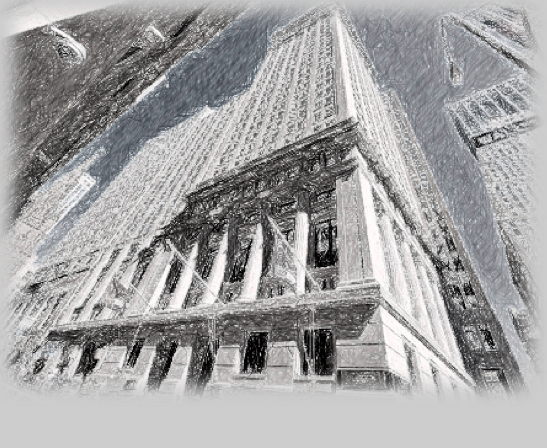The creation of the very first Hedge Fund dates back to 1949 when Alfred W. Jones coined the term ‘Hedged Fund’, meaning a fund that has been saved from risk. Jones built an entire Hedge Fund Structure, according to which he made investments in the market while hedging for financial losses. In 1948, while writing for the Fortune, Jones set his mind to trying this new investment tool himself.

After raising $100,000, Jones aimed to minimize the risk on long-term stocks by short selling those that weren’t performing well. After trial and error, Jones discovered that the best way to deal with the Hedge Fund Industry would be to convert the managing company to a limited partnership model instead of a general partnership one. He also added a 20% incentive fee for the managers of Hedge Funds. Even though his plan didn’t catch too much attention early on, it was in the 1960s that Jones’ Hedge Fund Strategy gained momentum, giving him the title of Father of Hedge Funds.
The biggest attraction of the Hedge Fund Structure for fellow investors was its ability to yield high returns and at the same time keep risk low. While Hedge Funds were no win-win game even then, the possibility of having a new financial instrument to gamble on the trading floor was welcomed with open arms. Popular names like Warren Buffet and George Soros are often mentioned when the early history of Hedge Funds is discussed because these risk-lovers count as early adopters of the strategy.
During these years, all the way from the 1960s to the 1970s, Hedge Funds specialized in a single strategy. Credited to Jones, this strategy focused on leverage and used what is known as the ‘Equity Long-short’ approach. Since Hedge Funds were new and refreshing at the time, an increasing number of institutional and individual investors alike invested them in. Over the next few years, close to 130 Hedge Funds were established.
To be precise, the Hedge Fund Industry was born in 1966 when an article in Fortune highlighted the performance of Hedge Funds against Mutual Funds. The former recorded a double-digit growth and maximized returns for those who opted for this mode of investment.
However, the Financial Crisis of the 1970s came as a big blow to the reliability of Hedge Funds. Those who had invested in Hedge Funds suffered the biggest losses, and as the loss spread far and wide, the stock market in the United States crashed completely. After suffering immensely at the hands of this new instrument, investors stayed wary of Hedge Funds up until the dawn of the 1990s.
As the idea had now become more and more common, investors started to add more ammunition to the earlier definition of Hedge Funds. Apart from Jones’ leverage and shortening strategy, many new ones were developed that fulfilled the basic premise of ‘hedging’ when investing in the market. These included credit arbitrage, fixed income, and distressed debt, multi-strategy and quantitative.
For the next decade, the term Hedge Funds became a buzzword. Every institutional investor with a solid asset backing started to allocate a greater portion of his investment portfolio towards Hedge Funds because of the renewed strategic approach for Jones’ concept. For many, the Hedge Funds Industry also posed an opportunity to gain absolute returns and invest in certain high-risk instruments that weren’t hedged at all.
At the turn of the 21st century, Hedging was still going strong. Invested-in by the strongest contenders in the market, the Hedge Funds Industry had now become popular worldwide with $1.93 trillion in Assets under Management. The financial setback of 2008 was the worst year for the Hedge Fund Industry in all its history.
Not only did Hedge Fund owners and investors lose a great deal because of the speculative bubble that emerged, the crisis proved to be a landmark because individual investors lost interest in this market for good. Once the world economy recovered from the defaulting crisis, 61% of Hedge Fund investors turned out to be institutional investors alone.
As the crisis ensued, global markets crashed. Hedge Fund investors and managers suffered losses and their investments defaulted, which made them resort to treasury notes and bills as a last resort. Moreover, the figure for Assets under Management declined greatly, by more than $2 trillion, meaning that Hedge funds were no longer as ‘hedged’ as investors would have hoped.
While some loved Hedge Funds for the buffer they provides against risk, others love it for the immense capability it has to keep bouncing back in the market even after hefty losses. In 2009, the same industry that had investors running for their money, started to appear promising again, albeit only for the more powerful.
Related Posts:
The history of funds and hedge funds
The history of hedge funds – Part 1

Dinis Guarda is an author, academic, influencer, serial entrepreneur and leader in 4IR, AI, Fintech, digital transformation and Blockchain. With over two decades of experience in international business, C level positions and digital transformation, Dinis has worked with new tech, cryptocurrencies, drive ICOs, regulation, compliance, legal international processes, and has created a bank, and been involved in the inception of some of the top 100 digital currencies.
Dinis has created various companies such as Ztudium tech platform a digital and blockchain startup that created the software Blockimpact (sold to Glance Technologies Inc) and founder and publisher of intelligenthq.com, hedgethink.com, fashionabc.org and tradersdna.com. Dinis is also the co-founder of techabc and citiesabc, a digital transformation platform to empower, guide and index cities through 4IR based technologies like blockchain, AI, IoT, etc.
He has been working with the likes of UN / UNITAR, UNESCO, European Space Agency, Davos WEF, Philips, Saxo Bank, Mastercard, Barclays and governments all over the world.
He has been a guest lecturer at Copenhagen Business School, Group INSEEC/Monaco University, where he coordinates executive Masters and MBAs.
As an author, Dinis Guarda published the book 4IR: AI, Blockchain, FinTech, IoT, Reinventing a Nation in 2019. His upcoming book, titled 4IR Magna Carta Cities ABC: A tech AI blockchain 4IR Smart Cities Data Research Charter of Liberties for our humanity is due to be published in 2020.
He is ranked as one of the most influential people in Blockchain in the world by Right Relevance as well as being listed in Cointelegraph’s Top People In Blockchain and Rise Global’s The Artificial Intelligence Power 100. He was also listed as one of the 100 B2B Thought Leaders and Influencers to Follow in 2020 by Thinkers360.











































